Pickenham Hub
Improving connectivity in our part of the world was one of my first pledges when I began campaigning to be the MP for Mid Norfolk back in 2007.
We know only too well that there has been a historic lack of investment in Norfolk and the East and, while the dualling of the A11, increasing broadband speeds and the first round of committed works for A47 improvements have all been positive steps forward, there is clearly much more that still needs to be done.
That’s why I’m delighted to announce today that the Government is committing to the next stage of the East-West Rail project – by building a new line from Bedford to Cambridge to boost our East-West connectivity from Norwich-Cambridge-Oxford-Swindon (or what I call the “East-West Innovation Arc”!).
Delivered via an innovative new East-West Railway Company, this new line will significantly improve connectivity between two of our country’s fastest growing innovation hubs (Oxford and Cambridge), and many of the communities in between – better linking them to some of our nation’s most important commuter lines too. It will also raise funds through housing development and entrepreneurial growth – funds that will then be reinvested into train and track to improve services and reopen Beeching lines closed in the 1960s. This, in turn, will drive forward connectivity improvements for many more rural towns and villages – communities that so often feel they have been left behind.
By better connecting our part of the world to this “Innovation Arc”, we can fully unlock the potential of the NRP and Norfolk’s world leading Life Science and Agri-Tech businesses. We can also boost the prosperity of all those industries along the A11 Tech Corridor – bringing more jobs and investment to Norfolk!
Ultimately, I would like to reopen the Wymondham-Dereham line to commuter trains once again – hopefully extending even further to Fakenham, and beyond! I also want to regenerate both Wymondham and Attleborough Stations, along with the land around them, to turn them into accessible hubs with superfast 5G that businesses want to meet at, and where commuters feel they really are using a 21st century transport network. This model being pioneered by the East-West Rail project is the key to making those aims a reality!
It will also ensure that new development is properly planned in new towns and villages connected directly to the transport network – as I have long called for at Mildenhall. Gone will be the days of dumping housing estates on rural communities with little thought for those that will live in them or those that already live there!
These are hugely exciting times and, as a former Business Minister and someone deeply passionate about the East, I am determined to do all I can to ensure WE can share in this boost to prosperity.
To learn more, and to see my historic work in his area, please visit my website here and follow the links below:
East-West Rail Consortium website: here
- Article – ‘A landmark moment’: Consortium delight as ‘central section’ route is announced”: here
- BBC News coverage: here
- My call for a Regional Railway Company back in 2012: here
- Launch of East Anglian Rail Prospectus in 2012: here
- Web-story on my work to improve Wymondham Station: here
- My Cambridge-Norwich Tech Corridor video: here
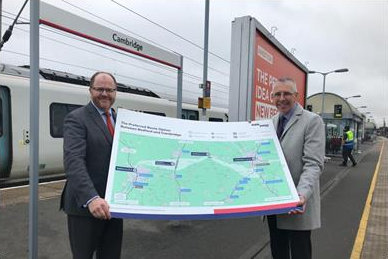
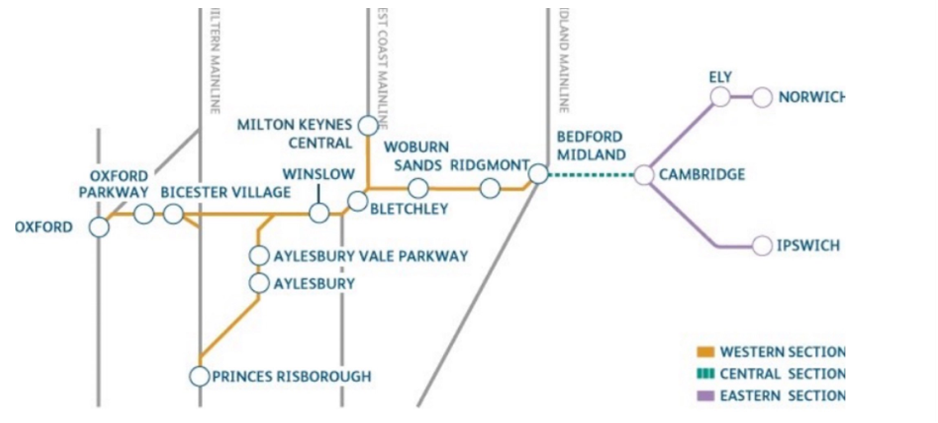
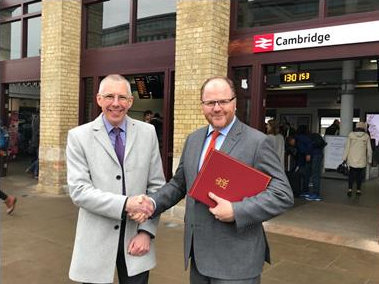
George Freeman answers MPs questions to the Department for Transport.
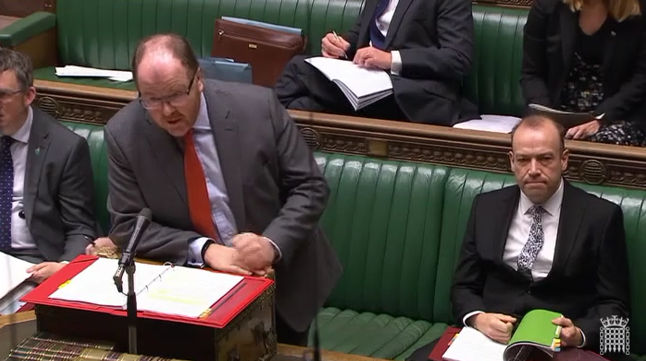
Oxford-Cambridge Expressway
Anneliese Dodds (Oxford East) (Lab/Co-op)
10. What recent assessment he has made of the potential merits of proposals for an Oxford-Cambridge expressway. [900510]
The Minister of State, Department for Transport (George Freeman)
The Government are completely committed to the east-west innovation corridor, the arc, and the Varsity line—one of the most exciting pieces of corridor infrastructure in the country. We are committed to the rail link, and, as my right hon. Friend the Secretary of State has announced, we are looking closely at the business and sustainability case of the expressway.
Anneliese Dodds
I was pleased to hear the Minister reconfirm that a review will take place. Of course, that was finally agreed to in the heat of the election campaign, perhaps because of concerns that were heard about the expressway. It would be very helpful to understand the parameters of that review: when will it be taking place; who will be involved; and will local authorities and groups such as the No Expressway Group be invited? We really need to know about this if that promise of a review is to be a reality.
George Freeman
I am delighted to say that we are listening to all the representations that we have received. There will be an announcement coming very shortly. Let me reiterate that this is about our commitment to sustainable and integrated public transport with housing. That corridor is a vital housing and growth corridor and we want to make sure that it is sustainable transport that works for the benefit of the people who live there.
Joy Morrissey (Beaconsfield) (Con)
On infrastructure and paying in, we in Iver in Beaconsfield receive very little money for transport infrastructure. We would love to see our footpaths and our roads used, but we simply do not have the money coming in from bodies such as TfL. Will the Minister look into expanding investment in places like Iver, so that we can have an Iver relief road and actually get the south of Bucks moving again?
Mr Speaker
May I advise Members that their questions should be linked to the main question? If a certain area is specified, your questions are meant to be about that area. You cannot just have a free for all. Minister, if you can pick something out of that, please do so.
George Freeman
At a stretch, Mr Speaker, I think that Buckinghamshire touches the east-west corridor. I would be delighted to meet my hon. Friend to look at a place-based solution for sustainable housing and transport.
Daniel Zeichner (Cambridge) (Lab)
Martin Tugwell of England’s Economic Heartland sub-national transport body described the expressway as a 20th century solution to a 21st century challenge. Is it not absolutely clear that the real answer is a public railway, an electrified railway, with an interchange with HS2?
George Freeman
The hon. Gentleman is bowling outside my off stump, but he knows that we are deeply committed to rail, to connectivity, and to sustainable transport. I cannot pre-empt the Secretary of State’s announcement on the expressway, but let me be very clear: we are committed to sustainable integration of housing with public transport, and that rail link is an absolute priority.
Greg Smith (Buckingham) (Con)
My constituents were very relieved when my right hon. Friend the Secretary of State visited Verney Junction during the general election and said that there would be a priority review of the expressway. He gave a commitment that were the expressway to be cancelled, funds would be made available for improvements to existing roads. Can my hon. Friend give an assurance that, should it be cancelled, those funds will be available?
George Freeman
I am delighted to give an assurance that, were the expressway to be cancelled, we would absolutely recognise that significant investment in other and even more important road links in that corridor would be needed.
Foot and Bicycle Journeys
Feryal Clark (Enfield North) (Lab)
11. What recent assessment he has made of trends in the number of journeys taken by (a) foot and (b) bicycle.[900511]
The Minister of State, Department for Transport (George Freeman)
As the Minister for the future of transport, I am committed both to creating a framework for UK leadership in transport technology and innovation and to bolder measures for place-based cleaner, greener and healthier transport and decarbonisation. I am delighted that, as a result of the £2 billion that we invested during the previous Parliament, we have seen a 13% increase in cycling and walking, and we are committed to a 100% increase over this Parliament.
Feryal Clark
The Minister will be aware that transport accounts for a higher share of overall emissions than any other sector, so helping people to drive less and cycle more is crucial to tackling the climate crisis. We currently spent £7 per head on cycling infrastructure, but the Walking and Cycling Alliance recommends that we should be spending £17 per head on cycling infrastructure if we are serious about improving cycling. He will be aware that the Conservatives’ pledge to spend £350 million on cycling infrastructure actually reduced that spend to £1.18—[Interruption.]
Mr Speaker
Order. I call the Minister.
George Freeman
As the new Minister for the decarbonisation of transport, I can say that the Government are absolutely committed to this, and we have a cycling Prime Minister who is committed to it. We have announced £350 million for cycling infrastructure. As I have said, we are completely committed over this Parliament to doubling the number of people cycling and walking.
Matt Rodda (Reading East) (Lab)
Walking and cycling have a vital role to play in easing congestion, cutting carbon emissions and helping people lead healthier lives, yet cycling and walking rates are flatlining in this country, and we are a very long way from Dutch or Danish rates. Interestingly, a report from University College London has criticised the Government for approving new housing developments that are dominated by roads and do not take account of pedestrians or cyclists. It found, quite simply, that three quarters of developments should not have been given planning permission because of the lack of safe cycling and walking routes. When will the Government address this important issue?
George Freeman
Right now—we already are addressing it. We are quite a long way from Denmark in all respects, but we are completely committed to this. It is true that for decades this country has not put cycling and walking at the heart of housing development—that was as true under the Labour Government as it has been over the past 40 years. We are committed to it, through the work we are doing with the Ministry of Housing, Communities and Local Government, with the housing infrastructure fund and our new single housing infrastructure fund. I am talking to the Secretary of State for Housing, Communities and Local Government about how we can ensure that every housing development has proper cycling, walking and public transport integration. If we are to achieve our decarbonisation targets, we have to do this.
Virginia Crosbie (Ynys Môn) (Con)
Cycling is extremely popular in my constituency of Ynys Môn, with its 125 miles of stunning coastline and unspoilt countryside. Can my hon. Friend confirm that the Government are committed to doubling cycling by 2025, and what difference does he think the £350 million cycling infrastructure fund will make in achieving that?
George Freeman
My hon. Friend is a brilliant advocate for Ynys Môn. I can confirm that commitment, and she is right that it will have a big impact on cycling and walking.
Tim Loughton (East Worthing and Shoreham) (Con)
Very complementary to cycling and walking are electric scooters, which are increasingly popular and commonplace in cities across the continent—they have just been legalised in Germany—yet they remain illegal in this country. Can we at last have a review to regularise the situation, because they are environmentally friendly and could make a huge contribution to reducing congestion, and it is a hip and cool thing to do?
George Freeman
Again, I seem to be a purveyor of good news. My hon. Friend will be delighted to know that as part of our innovation strategy we will shortly be announcing that we want to test scooters as part of a mixed economy for sustainable transport.
Topical Questions
Bob Seely (Isle of Wight) (Con)
I welcome the fresh new approach of this Front-Bench team. Given the importance of sustainable transport and sustainable housing, do Ministers agree that building low-density housing on greenfield sites is bad for sustainable transport, bad for sustainable housing and bad for our environment, because it is so car-dependent, which is why so many of our constituents object?
The Minister of State, Department for Transport (George Freeman)
I commend my hon. Friend on that point and his “Island Manifesto”, in which he makes that point. We are working with the Ministry of Housing, Communities and Local Government to ensure that we move the dial on much better integration of cycling, walking and public transport in new housing.
Jackie Doyle-Price (Thurrock) (Con)
Yesterday, Highways England published the latest plans for the proposed lower Thames crossing. In that set of plans, the proposal for a Tilbury junction, which would divert HGVs from my constituency road network, has been removed. Does the Minister agree that, if we are going to get a road that the community does not want, it is incumbent on Highways England to ensure that it works for us?
George Freeman
My hon. Friend makes an excellent point. I would be delighted to meet her and the roads Minister, Baroness Vere, who is in the Gallery.
Layla Moran (Oxford West and Abingdon) (LD)
I of course welcome any review of the Oxford to Cambridge expressway, but my constituents are worried that it is going to lead to more delays to improvements on the A34, in particular safety improvements and work on the Lodge Hill junction, which I understand is further delayed. Can the Minister reassure my constituents that there is no way any dither and delay on the Oxford to Cambridge expressway will affect improvements to the A34?
George Freeman
Yes.
Richard Fuller (North East Bedfordshire) (Con)
The Secretary of State will be aware of the implications of his announcement a few minutes ago about the preferred route of East West Rail for housing growth in the east of my constituency. Will his Department commit to looking once again at realignment of the A1?
George Freeman
My hon. Friend has been active in making representations on this issue, which we hear loud and clear. Following the announcement, I look forward to talking to him, to councils, and to the Ministry of Housing, Communities and Local Government, about the proper integration of housing, rail, and the A1 junction.
Mrs Emma Lewell-Buck (South Shields) (Lab)
My constituent, Marjorie Johnson, was badly injured when, as she crossed the road, a mobility scooter hit her full force. Seven months on, injuries to her legs still restrict her mobility. Because the scooter driver was not insured, no action has been taken against him. What will the Secretary of State do about that?
George Freeman
As part of the regulatory review of future mobility and mobility scooters, I would be delighted to meet the hon. Lady to ensure that the issues involved in that case are properly addressed.
Community hubs and spirit can be a big factor in rural communities - that’s why I am looking forward to officially opening the Pickenham Hub in North Pickenham this coming Saturday.
The opening of the former and now disused St Andrew’s Primary Academy as a community hub illustrates the years of hard work, tireless fundraising and what can be achieved by communities - with North Pickenham Community Project Ltd and the community raising more then £30,000 via various initiatives.
To read more, you can visit the EDP article here: https://www.edp24.co.uk/news/former-school-reopening-as-pickenham-hub-1-6475388
If you are local, do come along to celebrate the opening, details of which can be found below:
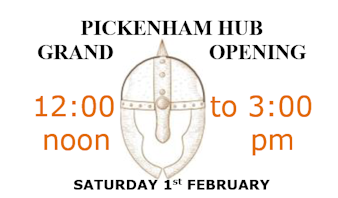
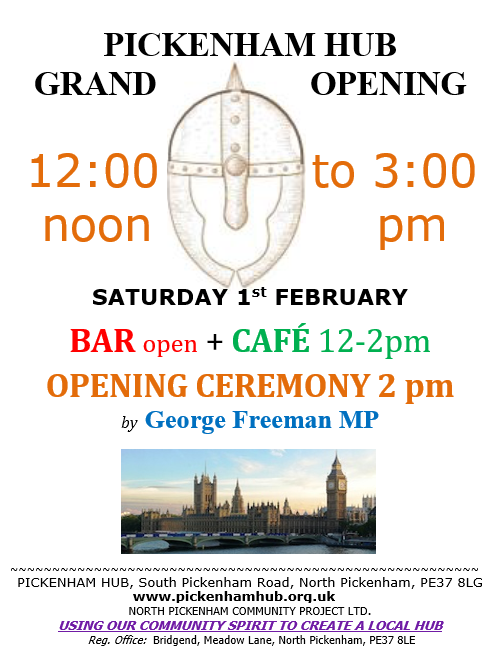
I am delighted that Government funding is bringing fast broadband to more communities across Mid Norfolk, with Openreach announcing plans to make ultrafast, ultra-reliable and future-proof broadband in 227 market towns and villages across the UK, including in: Attleborough, Besthorpe, Great Ellingham, Dereham, Toftwood, Watton and Wymondham.
This is great news for households and businesses in those towns, and we are determined to ensure all rural communities are properly connected.
With:
✅ 500m Rural Digital Shared User Fund
✅£5bn 5G Programme
We are 100% committed to 100% connectivity!
Read more in the EDP article here.
Having worked in business for over fifteen years before becoming Mid Norfolk’s MP, and having served as a Business Minister, I know just how important local businesses are to both our local and national economy. They really are the engine that drives our country forward!
That’s why I look, as often as I can, to support local Business – and promote worthwhile groups and forums that bring the Business community together to network and collaborate.
The Breckland Business Forum is one such group in our area and is run by the hugely effective team at The Lively Crew – determined to support small, medium and large scale businesses across the entire entrepreneurial spectrum.
Their next quarterly Breakfast Forum is coming up on Friday 7th February – between 7.30am-9.30am at South Green Business Park in Mattishall.
Space is limited and so tickets must be secured in advance.
Richard Bridgman OBE from Warren Services will act as the Guest Chair – and it will be joined by Julia Nix OBE (the East Anglia District Manager for the DWP), Ben Gaskin from Poultec and Andrew Wheeler from West Suffolk College.
For more information or to book your tickets, please telephone The Lively Crew at 01603 702374.
Having spoken at/sat in on previous events in the past, I can testify to the high quality of the sessions!
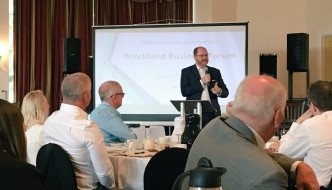
George Freeman responds on behalf of the Roads Minister to a debate on all-lane running motorways.
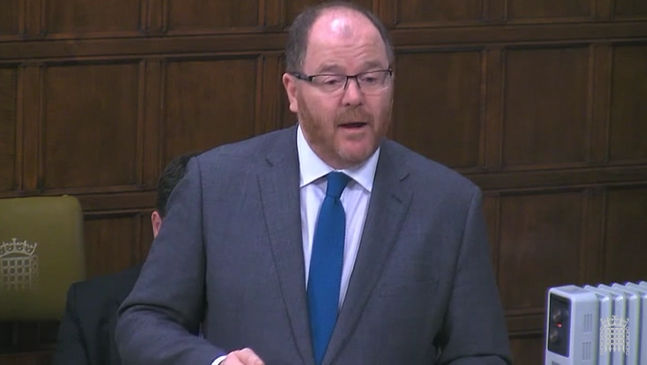
The Minister of State, Department for Transport (George Freeman)
It is a pleasure to serve under your chairmanship for the first time, Mr Paisley. I am standing in for the Roads Minister, Baroness Vere, who will be watching the debate closely, and I will meet her afterwards. Let me congratulate and thank the hon. Member for Rotherham (Sarah Champion) for raising this issue. I agree that it merits a bigger debate. The participation of colleagues across the House signals the strength of feeling.
Let me start by acknowledging the tragedy, pain and trauma suffered by the families of all those who have lost their lives on our roads—especially Jason Mercer, whose family are in the Gallery, and Dev Naran—and particularly, in the context of this debate, on our smart motorways. It is no good Ministers saying that all roads are safe; people need to feel safe and be safe. We need to ensure that safety remains our No. 1 priority. We accept there is a problem here. The Secretary of State is, as we speak, putting the finishing touches on a serious package of measures to tackle it. I cannot and will not pre-empt that, but I will deal with a number of points that were raised.
I would not be doing my job if I did not start by reminding everyone that safety is our No. 1 priority. Highways England’s objective in implementing smart motorways is to ensure that they are as safe as the pre-smart motorway network, which is already the safest bit of the road network, and ultimately safer. We are committed to developing an increasingly safe road network, and I am alarmed that the safety statistics showed a slight increase last year. I take the point my hon. Friend the Member for Chatham and Aylesford (Tracey Crouch) made about drilling down into that data, which I will raise with Baroness Vere.
Mr Betts
What the Minister has said is interesting, but given all he has heard, does he accept that smart motorways, or all-lane running—whichever he wants to call it—are as safe as building an extra lane and having a permanent hard shoulder?
George Freeman
That is one of the precise questions that the Secretary of State is looking at. I do not want to pre-empt that work, but I absolutely accept the hon. Gentleman’s reason for asking that important question.
Highways England is constantly monitoring, and it has introduced a number of measures. This is ongoing work. It is not something we think is done and dusted; it is live as we speak. The truth is that, for anyone involved, one accident is one too many. I want to ensure that no one ever dies in this way again, and that the legacy of the people who have died is that that sort of accident, and the situation in which it occurred, cannot happen again. That is why the Secretary of State announced an evidence stocktake soon after taking office. He has called in all the evidence and data, and he is looking at a package of measures to deal with this issue, which will be announced imminently. It would be sensible if, following the debate, we quickly reconvened the all-party group on road safety. Perhaps we might go further and create a taskforce for all colleagues who are interested in this issue, so we can listen to their concerns and ensure that that work is fed directly in.
I hope my hon. Friends and colleagues on the Opposition Benches understand that I cannot pre-empt the Secretary of State’s announcement, but let me make one or two key points in response to those that were raised. It is true that the principal rationale for smart motorways is to increase capacity, reduce congestion and reduce pollution. There are environmental benefits to ensuring that we maximise the use of existing motorways rather than building new motorway capacity, but there are real issues about awareness, information, the positioning of refuges, rescue, vehicle monitoring, and the safety of vehicles re-entering the highway. All those issues have to be got right, and that is why I am responding in the way I am.
Smart motorways have increased capacity. Since we introduced the scheme, more than 1 billion journeys have been made over the 250-mile network of smart motorways. I do not want people to think this is a very small patch of malfunctioning motorway; it is extensive, and over the last 15 years, millions of people have driven up smart motorways.
Sarah Champion
This debate is about all-lane running, not smart motorways. It actually is about a very small stretch. Please, Minister, do not just focus on smart motorways and how wonderful the M25 is. We get that. We are talking about all-lane running, which is where we do not have investment.
George Freeman
I understand. I am setting the context, because I think there is quite a lot of public misunderstanding about what smart motorways are. I am short of time and I am keen to get to the end of my speech if I can.
The conversion of the hard shoulder to a running lane is a key feature of capacity management, and we avoid having to build more motorways when we can increase the capacity of existing ones. I totally accept that there are real issues, which the hon. Lady raised, not least of which are refuge placement and ensuring that we have full CCTV coverage so we are able properly and quickly to monitor vehicles that are in trouble and ensure that they are dealt with properly. The scheme has been running since 2014. To the point made by my hon. Friend the Member for Chatham and Aylesford, there is a lot of data that we ought to be able to draw on, and we are drawing on it in this review.
It is worth reflecting that the hard shoulder on a traditional motorway has never been deemed a safe place to stop. One of the problems is that, traditionally, people have seen the rescue telephones and thought of it as a safe place to stop, find facilities and make a phone call. It is not and never has been. One of the things we have struck is a misunderstanding that it is a good place to pull over. It is not. Let me repeat that the hard lane has never been that and is never that. In contrast, there have been no collisions in refuges resulting in fatalities.
In the original pilot on the M42 in 2006, refuges were set very close together, at approximately 500 metres apart. Based on operational insights, further performance data and ongoing monitoring, Highways England moved that to 1,000 metres on all other dynamic hard shoulder running schemes, and then to 2,500 metres on all-lane running schemes. That is one of the things the Secretary of State is looking at.
Highways England undertook a review of operational all-lane running schemes and found no consistent correlation between the number of live-lane stops and the spacing of emergency areas, but I take the point my hon. Friend made about drilling down into that data, and I will ensure that that is done. We and Highways England know that motorists not only need to be safe but need to feel safe and need to know what to do when they are in the dangerous situation of a breakdown or a collision. We need to ensure that everyone has that information properly.
The specification for the maximum spacing of emergency areas on new schemes has been reduced from 1.5 miles, which is about 90 seconds at 60 mph and equivalent to the spacing of lay-bys on sections of A road, to 1 mile, which is about 60 seconds at 60 mph. However, again, we need to look at the data; on particular sections, given the geography of the road area, the spacing might need to be different. Highways England will also install a number of additional emergency refuge areas in locations with the greatest spacing. We need to look at whether there are particular blackspots where we need more refuges.
All emergency areas are fitted with orange surfacing to make them more visible, and better advance signing will give motorists more information about how far away the next one is. I want to go further and ask whether we could use digital technology, which many drivers use for satellite navigation, to ensure that every driver knows when they are in one of these areas, where the refuge is and what they should do. Technology can help us ensure that we avoid the sort of tragedies we have seen.
Identifying a broken-down vehicle is key, and I know that is something my hon. Friend the Member for Chatham and Aylesford has raised. If a driver is unable to reach a place of safety, the regional traffic control centre can and should use the overhead electronic signals to close lanes, display warning messages and slow down approaching traffic, as well as to create an access lane for the emergency services. To reduce response times in setting those signals, Highways England has installed a stopped vehicle detection system on two sections of the M25 and will shortly install one on part of the M3. Again, however, if that is the prerequisite, we need to put it everywhere and ensure that it works properly. Highways England is designing it into all-lane running smart motorway schemes that are currently scheduled, and it is exploring how to provide the same benefits on all existing all-lane running smart motorways. I say that not to suggest that it is an adequate response to the points that were made, but simply to highlight the work that is going on.
Lilian Greenwood
The Minister will know that when Highways England appeared at the Transport Committee, it confirmed that stopped vehicle detection systems are only 90% effective. What is in place to deal with the other 10%?
George Freeman
That is an excellent point, and it is one of the issues the Secretary of State will be looking at in his work.
In the remaining seconds, I want to touch on reports that the AA has said it will not let its patrols stop in live lanes. That is concerning, because we need the support of all vehicle rescue operators. It is worth saying they are never expected to work in a live lane on any motorway unless the scene has been made safe by police officers. That has always been the situation. Highways England has developed guidance on safe recovery with the recovery industry, and it has put in place a whole series of measures, such as electronic signs, variable speed limits and red X signals. Regional control centres and on-road traffic officers can now support vehicles leaving an emergency area. Again, I am not suggesting that is adequate; more needs to be done to ensure that this is working properly.
Red X lane enforcement is long standing. It has been in use since the system was introduced in 2006, and Highways England, in partnership with the police, has issued more than 180,000 formal warning letters to drivers identified as having wrongly used the hard shoulder at a number of smart motorway locations. That number must come down. The aim should be to ensure that nobody drives in the wrong lane at the wrong time, rather than to issue letters to warn them. We need faster progress on that. We have brought in legislation to allow automated detection of red X offences using camera equipment and to enable the police to prosecute, but, again, that should be the last line and something we hope never to have to do. We need to ensure that those incidents do not happen. There have been major public information campaigns, which I do not have time to list in detail.
Let me conclude by saying, in the spirit of the debate, that I am keen to work with the Roads Minister, Baroness Vere, to follow up with colleagues on both sides of the House and look at whether we might set up a taskforce to ensure that their insights can be fed in, and to work with the Secretary of State to ensure that the package he announces is adequate for all of us who use the motorways and represent drivers. I want to ensure that the deaths of Jason, Dev and the others were not in vain, and that their legacy is real improvement so everyone knows these routes are safe.
